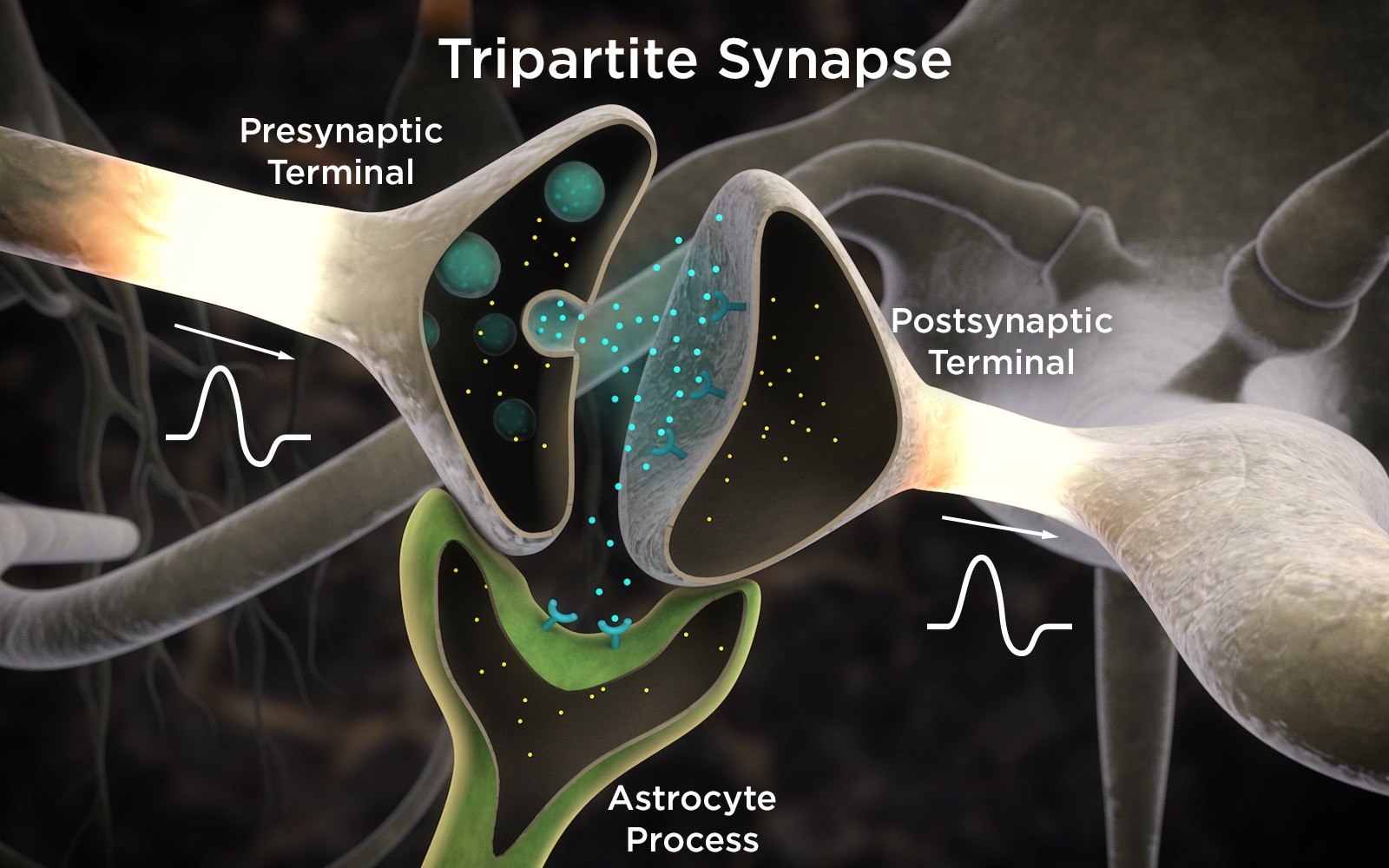The Three Types of Astrocytes

Fibrous Astrocytes
Found more in white matter
(the fattier, deeper parts)
Less branching: the tendrils don't split off repeatedly
Regulate the concentration of ions and chemicals in the brain for nerve synapse to work best
Help respond to injuries in the central nervous system

Protoplasmic Astrocytes
More common in grey matter
(Where most neuronal bodies are)
Super "branch-y": Protoplasmic astrocytes have shorter tendrils that branch off madly
Use the "endfeet" that end each branch to regulate synapses, contact blood vessels, and more
Prevent exitotoxicity, which is where the overstimulation of neurons can damage connections

Radial Glia
Found in the developing nervous system
(Crucial for developing the big cerebral cortex)
Long, thin tendrils that cover entire pieces of developing tissue
Newborn neurons use radial glia to get to their destination in the branching
All neurons, astrocytes, and more are descendents of radial glia
Functions
-
Support and Maintenance of Neurons
Astrocytes provide:
- Structural Support
- Metabolic Support
Form the physical structure of the brain, maintain the neural network, provide a scaffold to support neuronal cells and synapses.
Supply neurons with nutrients such as lactate, derived from stored glycogen, which is crucial for high neuronal activity, where much more energy is needed.

-
Regulation of Blood-Brain Barrier
Astrocytes are critical to build and maintain the blood-brain barrier.
- Endfeet Contact
- Barrier Maintenance
The endfeet enwrap blood vessels, regulating the endothelial cells and ensuring only select substances can travel between the blood and the brain.
By releasing many different types of signaling molecules, astocytes keep the cells of blood vessel walls packed, preventing toxins from entering the brain.

-
Regulation of Neurotransmitters
Astrocytes are the regulators of neurotransmitters at neuronal synapses. This is called the tripartite synapse, and it is fair to say that this is the most important function of the astrocyte.
- Cleaning Up
- The Astrocyte Input
With transporter proteins, astrocytes clean up leftover neurotransmitters (like glutamate and ATP) after an electrical signal passes through the synapse. This prevents overexcited neurons (which are bad) so the synapse works properly.
Astrocytes can also release neurotransmitters of their own into the synapse, which can drastically influence the receiving neuron's behaviour.

-
Responding to Injury
Through reactive astrogliosis, astrocytes are key to contain brain injuries.
- What is it?
- Neuroinflammation
Reactive astrogliosis is a complex chain of actions that astrocytes undergo to form scars that isolate brain injuries. This includes changing which genes are expressed, cell swelling, and rapid astrocyte replication around the injury to form the scar.
Along with reactive astrogliosis, astrocytes release chemical signals called cytokines and chemokines that allow controlled inflammation. inflammation is good for healing but bad for function, so astrocytes also resolve inflammation once unnecessary.

Current Research
Being such an important part of the brain, a lot of research has gone into astrocytes recently! Here are some examples from major scientific journals.
- In Nature Communications 15, 5979, Braga et al. examine the role of the astrocyte in regulating the sleep/wake cycle.
- In Nature 632, 139-146, Theparambil et al. explain how the chemical adenosine, when picked up by astrocytes, is used to coordinate the energy usage, waste disposal, and function of the brain.
- In Spinal Cord 62, 133-142, Alizadeh et al. conduct a meta-study of astrocyte research to determine that during spinal cord injury, astrocytes can be "reprogrammed" to act as neuron-like cells.
- And in Science 378, Endo et al. explain some of the genes involved in the differentiation of astrocytes, and how some of them have turned out to be genes that cause Alzheimer's Disease.
So what are you waiting for?
Go learn all about the incredible astrocyte!
And if you want to contribute to this site,
just message me through
GitHub!
